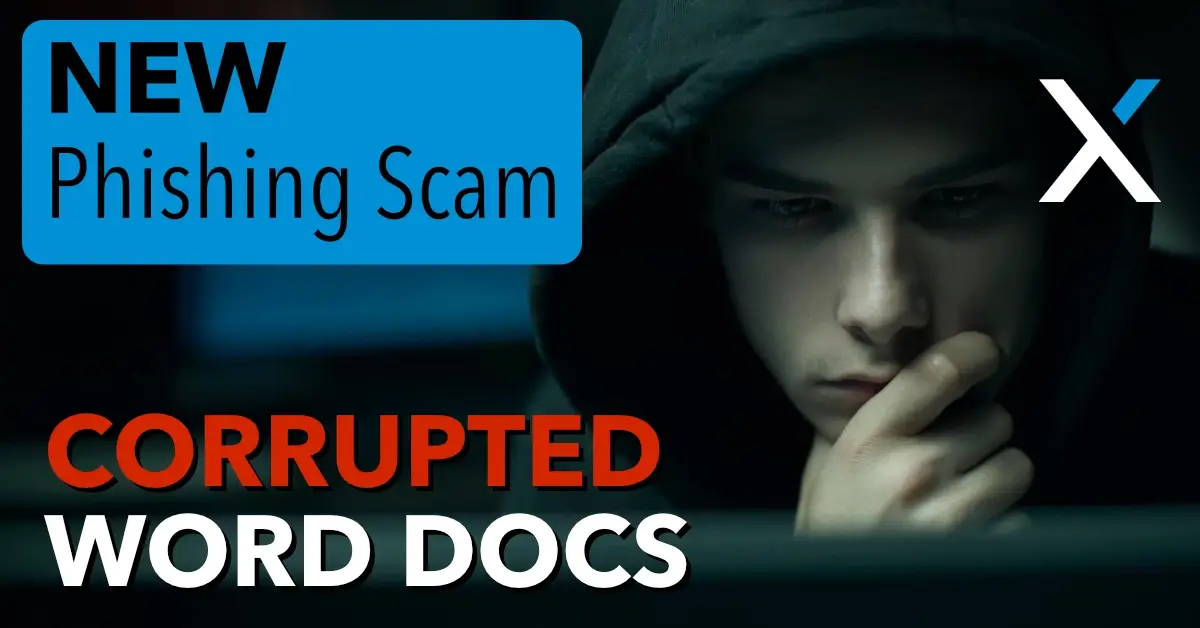You probably already know that email scams are a big problem. That’s why most businesses rely on email security tools to catch suspicious messages before they cause harm. These tools scan attachments, block known threats, and even analyze files in safe environments to prevent malware from slipping through.
But cybercriminals are constantly looking for new ways to outsmart these security measures—and they’ve found one that’s tricking even the most cautious businesses.
The latest phishing scam? Intentionally corrupted Microsoft Word documents that sneak past security filters and trick employees into opening dangerous files. Here’s how it works, why it’s effective, and what your business can do to stay protected.
How Hackers Use Corrupted Files to Evade Security
Most email security systems scan attachments for malware before they ever reach your inbox. If an attachment contains malicious code, the system will flag it as dangerous and either block it or quarantine it.
But here’s the trick: when hackers deliberately corrupt a Word document, security scanners can’t read it properly. Instead of detecting a threat, the system dismisses it as an unreadable or broken file—and allows it through.
Then, when an employee at your business opens the document, Microsoft Word prompts them to “recover” the file. That’s because Word has a built-in repair feature designed to fix damaged files. But in this case, the “recovered” document is actually a phishing attack in disguise, leading the user to a fake login page or injecting malware into the system.
Why This Scam Works So Well
Cybercriminals are exploiting both technology and human habits to pull off this scam. Here’s why it’s so effective:
- Security software can’t analyze what it can’t read. A corrupted file doesn’t trigger traditional malware detection because its contents aren’t visible—until it’s “fixed.”
- People trust Microsoft’s recovery feature. When Word suggests fixing a broken document, most people assume it’s just a glitch and click “Yes.”
- Phishing links bypass traditional malware detection. Many security tools focus on detecting malicious code, not phishing links hidden in seemingly normal documents.
Essentially, hackers leave the final step of their attack up to you—all they need is for someone in your company to unknowingly complete the process.
How Your Business Can Stay Secure
Even if your company uses strong security tools, this type of phishing attack can still slip through.
The good news? There are simple steps you can take to reduce the risk:
1. Be Cautious with Unexpected Attachments
If you receive an email with a Word document from someone you weren’t expecting, don’t open it right away. Ask yourself:
- Does this sender usually send me attachments?
- Was I expecting a document from this person?
- Does anything about the email seem off?
If something doesn’t feel right, confirm with the sender through another method before opening the file.
2. Never Recover a Corrupted File from an Email
If you open a Word document and get a message asking if you want to recover it, stop and think. If the file came through email and wasn’t something you were expecting, don’t click “Yes.” Instead, report it to your IT team or delete the email.
3. Strengthen Your Email Security
Make sure your business is using email security solutions that go beyond basic spam filtering. Look for:
- Advanced attachment scanning that can analyze a file’s behavior, not just its contents.
- URL protection that scans links in email attachments, even after they’ve been opened.
- User training to help employees recognize phishing attempts and suspicious attachments.
4. Use a “Zero-Trust” Approach to Emails
Train your team to assume that any unexpected email attachment could be a threat until verified. Encourage a cautious approach to opening attachments and clicking links.
5. Keep Your Software & Security Tools Updated
Ensure that Microsoft Office, email security systems, and endpoint protection software are regularly updated. Hackers take advantage of outdated systems, so keeping software current is an easy way to reduce risk.
Cybersecurity Requires a Layered Defense
No single tool can stop every threat—especially when cybercriminals are constantly evolving their tactics. That’s why the best approach to cybersecurity is layered protection, combining:
- Technology: Strong email filtering, attachment scanning, and anti-phishing tools.
- Policies: Clear guidelines for handling email attachments and verifying unexpected files.
- Training: Equipping employees with the knowledge to recognize and avoid scams.
By taking these steps, your business can stay ahead of cyber threats and protect valuable data from phishing attacks.
Hackers may keep coming up with new tricks, but with the right security measures and a cautious approach, you can avoid becoming their next victim.
